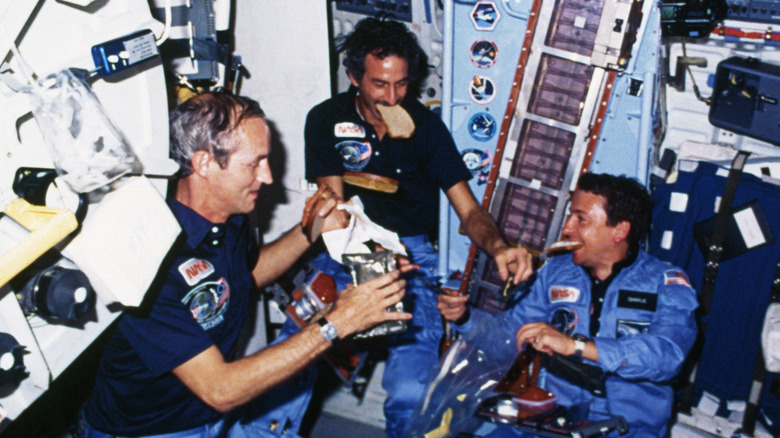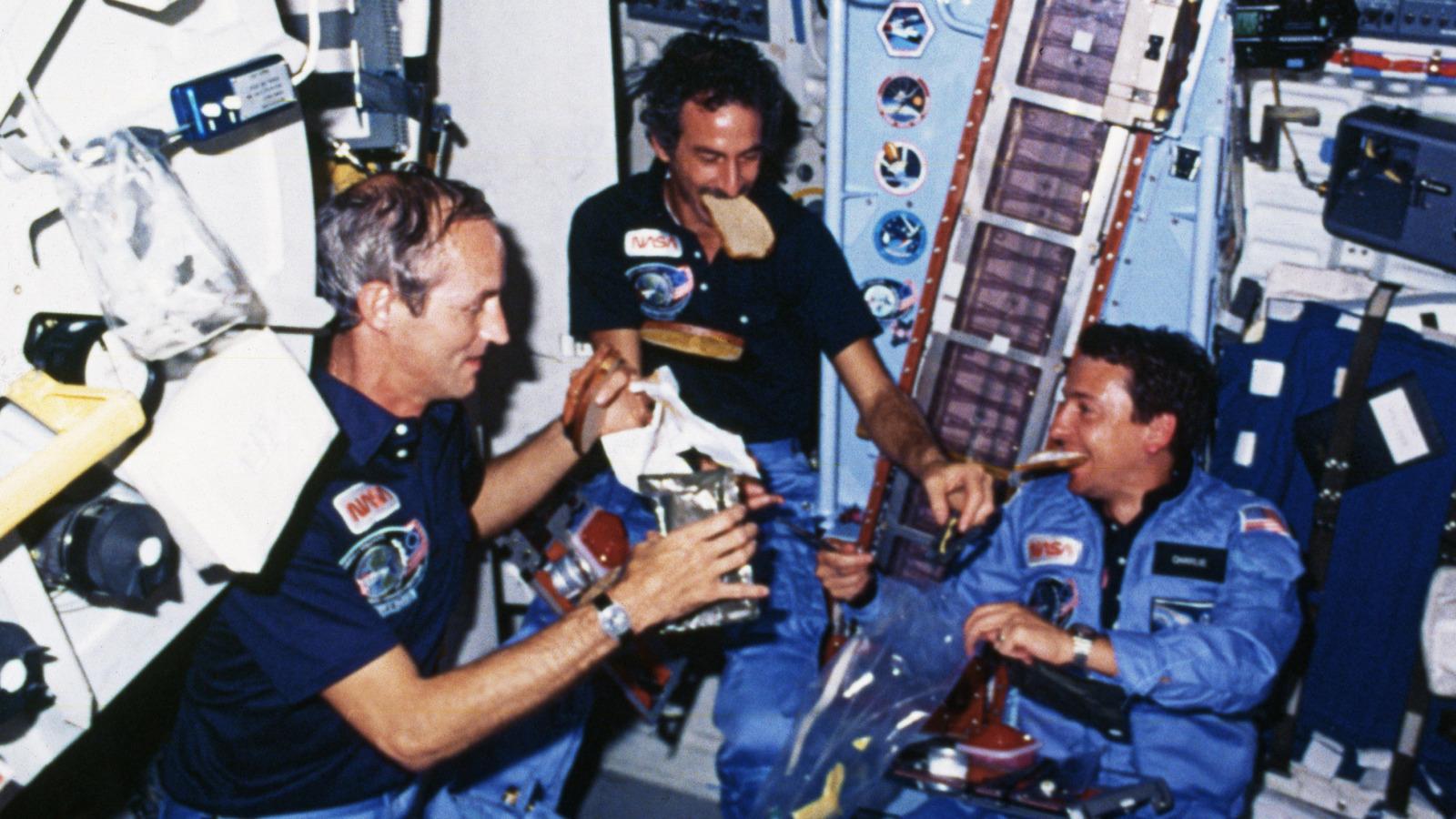
Historical/Getty Images
Created in collaboration with NASA during the height of the space race, Space Food Sticks were Pillsbury's innovative solution to the challenge of fueling astronauts on space missions. Developed by food scientist Howard Bauman, these chewy tubes were an energy-dense snack for zero-gravity conditions that later landed in grocery stores across America. In the 1970s, they became a quirky household favorite — not just for their portability, but for offering kids a taste of space-age excitement. What began as a scientific solution to fuel astronauts became an edible emblem of a forward-looking era, briefly blurring the line between astronaut fuel and after-school treat.
Space Food Sticks were among the first foods engineered specifically for space conditions: crumb-free, shelf-stable, and packed with essential nutrients. It's unclear if all versions of Pillsbury Space Food Sticks had the same basic contents. However, some ingredient lists reveal a mix of soy and milk proteins, glucose, sugar, vegetable fats and emulsifiers. The available flavors of chocolate and peanut butter were all-American, but they offered kids a taste of outer space with no rocket required. Chocolate itself had already made its way into orbit in the early 1960s. Yuri Gagarin became the first astronaut who brought it into space, proving that even sweet treats could make the journey. The popularity of these snacks reflected the nation's obsession with astronauts and exploration, placing them alongside a wave of other space-inspired food experiments. Even iconic brands jumped into orbit, like Coca-Cola, which produced the first soda to go to space after an ambitious mission to prove soft drinks could be enjoyed in zero gravity.
From orbit to the snack aisle
As Space Food Sticks faded into the darkness of space exploration lore, novelty snacks like freeze-dried ice cream and strawberries captured the public imagination, even if they rarely flew in spacecraft. First introduced to museum gift shops in the mid-1970s, the crunchy Neapolitan treat was created for the NASA Apollo 7 mission. However, it's not clear if the product was actually used in that capacity. Smithsonian space history curator Jennifer Levasseur explained that the astronauts might have had "a chance to try it out before the mission to see if they liked it." Her own experience tasting the chalky snack led her to claim it was "like eating foam." Despite never actually becoming standard astronaut fare (the International Space Station received freezers for real ice cream in 2006), it has cemented its place in pop culture. It continues to sell in the gift shops of places like the Kennedy Space Center, even decades later.
The fascination with space-themed eats may have started with food sticks, but didn't end with ice cream. Even today, NASA continues to experiment with food and snacks designed for actual missions, like this seven-ingredient space salad — full of nutrients and free of dressing that they hope to one day grow entirely in orbit. Space food may have evolved since we first landed on the moon, but its legacy still fuels curiosity and snack cravings across the galaxy.



